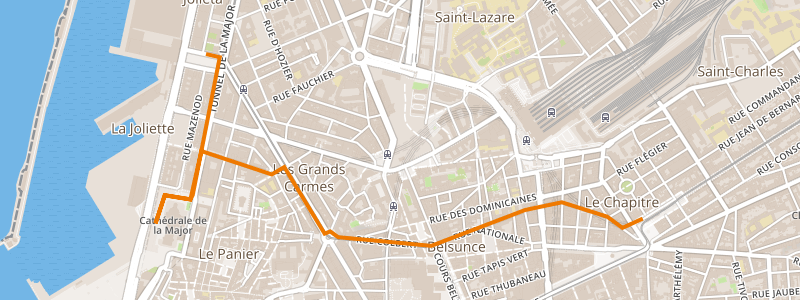The Alcazar used to be a mythical theatre that lit up Marseille's evenings. Located in the heart of the popular and commercial district of Belsunce in the city center, the hall saw the passage of great artistic figures of the time. Its fame and the demands of the Marseille public were such that the Alcazar was a must for any performance. Today, it is a public library covering 18,000 m² testifying of Marseille's history.
The history of the Alcazar
The Alcazar-Lyrique opened its doors in 1857 at Cours Belsunce, which was one of the most popular places in Marseille at the time. The owner of the building, Etienne Demolins, invested heavily to provide the site with Moorish style architecture in reference to the Alhambra of Granada as well as a series of decorations, each more shimmering and extravagant than the next. More than 1500 people could sit down for a show while smoking and drinking. Demolins was proud to have built "the largest café-concert on the continent". In competition with another similar establishment, "le Casino Musical" created only 18 months earlier, the new hall quickly became known, creating a de facto competition between the two.
Three years after its opening, the Alcazar had already acquired a national reputation that enabled it to hire some of the most popular Parisian stars. These ones faced the intransigence of Marseille public, who knew how to loudly express their disapproval by throwing projectiles. It was at this time that the reputation of the Marseilles public for being demanding and harsh was forged.
In 1867, the privileges of the great theaters were abolished. Establishments such as the Alcazar can now proclaim themselves as theaters in their own right, which implies greater freedom in sets, costumes and shows. It is the golden age of the place where many of the best French and foreign artists of their time have performed. But in June 1873, after a performance, a fire broke out in the sets because of the projections of a fence fireworks display. There were no victims, but the fire progressed so quickly that the premises were completely destroyed. Only the master walls remained of the original building.
The Alcazar: from the theater to the library
The reconstruction was carried out in four busy months to minimize the financial losses resulting from the closure. The establishment reopened in December 1873 with the same architectural inspiration. It was at that time the golden age of pantomime, which were important shows and for which Marseille became the capital, particularly under Louis Rouffe's leadership. The hall closed for two years between 1887 and 1889. When it reopened, the new director renovated the place for two months, moving the entrance to Cours Belsunce. The room changes from a café-concert to a music hall by abandoning internal consumption. The Alcazar became an obligatory passage and if the national stars performed there, it was the local artists and Marseilles shows that were the most successful.
In 1931, the Alcazar was transformed into a cinema and it was not until 1949 that the place regained its original function with the programming of Marseilles shows or operettas. After a few developments, the Alcazar finally closed its doors in 1966. The building was destroyed in 1979, only the entrance remained. In 2004, the regional public library was inaugurated. It has nearly a million documents that can be consulted as well as valuable collections (old manuscripts, etc.). This ancient monument in Marseille is now one of the most complete research sites in the city.
Have you thought about renting a segway or renting a bike to visit Marseille? The Petit Train de Marseille will take you through the streets of the Phocaean city to discover the history of the city. Remember to go to the ticket office to buy your tickets in advance to avoid queues ;-).

